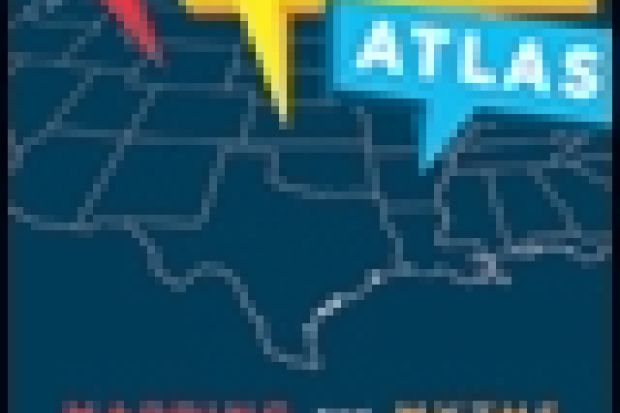Capturing the heart, soul or essence of America has been an enduring, if elusive, ambition of the creative arts. Academics too have tried their hand. While we have a number of celebrated histories, geography has rarely been spoken of as a contributor to the unmasking of the US. This is a shame, as the simple brilliance of this book attests.
The Real State of America Atlas is a visually stunning collection of 40 chapters that lays bare the condition of the modern US. Each chapter opens with a short textual overview, but the majority of space is given over to maps, graphs and diagrams that cover everything from home ownership and homelessness through religion and sport to climate change and the economy. It is not a conventional academic research text. Although its audience is not explicitly stated, it would work perfectly as a secondary-school resource and could attract a broad general readership. It is overwhelming in the weight of factual material it presents, yet clear and direct in its style. The authors - and certainly the designer, Isabelle Lewis, who receives a well-deserved acknowledgement - understand perfectly the persuasive power of maps and use it wonderfully effectively here.
Freed from the constraints of linear narrative, the authors do not adopt an overt political position or develop an underlying thesis. They simply present the facts and leave it to readers to draw their own conclusions. In one sense, the US that is presented in these pages will be a familiar one. It is shown as a greedy, brutal, unequal, aggressive yet endlessly alluring nation. Although the broad contours might not be surprising - ethnic and gender divisions come through again and again - it is the specific details that are by turns shocking, surprising, saddening and, at times, funny.
The book looks inside the US and also at its influence internationally. All 40 chapters warrant close attention, but among the most revealing are those on religion, the devastation of Native American lands, poverty and wealth, and the most recent presidential election. The question of God, for example, is also one of segregation and inequality in the US, as is money, politics and almost everything else worth taking seriously. This book reveals that things are changing - frequently, if not always, for the better - although inequalities are more enduring.
So many of the issues presented here are deeply interrelated. It could be argued that a weakness of the format is that these links are not made explicit within the text. However, by leaving space for the reader, they emerge powerfully through repeated readings. It is especially poignant, for example, to look at maps of the losses of Native American lands and then to read 37 pages later that 32 per cent of Native Americans live below the official poverty threshold.
In the UK, Danny Dorling has recently attempted something broadly equivalent with his book So You Think You Know About Britain?. It is refreshing to see such talented communicators reaching out beyond traditional academic audiences. They have important things to say, and for too long academia has neglected this wider duty. The Real State of America Atlas shows what can be achieved when the wider impacts of social research are taken seriously. It offers a visual hymn to the power of maps, geography and the endless fascination of a nation with which so much of the world has such an essential relationship.
The Real State of America Atlas: Mapping the Myths and Truths of the United States
By Cynthia Enloe and Joni Seager
University of California Press
128pp, £14.95
ISBN 9780520269484
Published 20 July 2011
Register to continue
Why register?
- Registration is free and only takes a moment
- Once registered, you can read 3 articles a month
- Sign up for our newsletter
Subscribe
Or subscribe for unlimited access to:
- Unlimited access to news, views, insights & reviews
- Digital editions
- Digital access to THE’s university and college rankings analysis
Already registered or a current subscriber? Login
